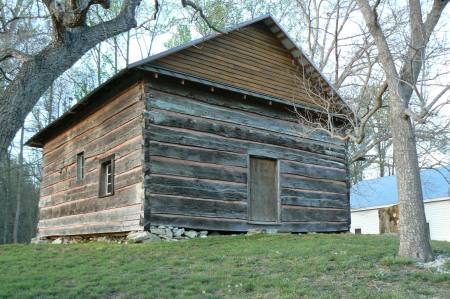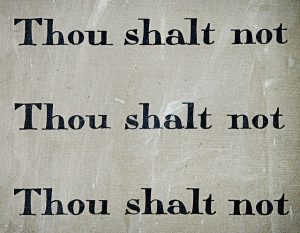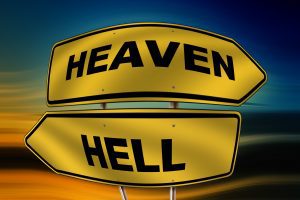SHUBAL STEARNS
By Timothy Binion
Shubal Stearns was born in Boston, Massachusetts, on January 28, 1706. He was married to Sarah Johnstone but had no children. He came out of the New Light movement and became a Baptist in 1751. He accepted believers’ baptism at the hands of Wait Palmer, the pastor of the First Baptist Church in North Stonington, Connecticut. On March 20th of this same year he was ordained into the full work of the ministry.
In 1754 Shubal Stearns felt led to leave the New England area, looking for what he called “providential openings”. He spent a short time at Opeckon Creek, Virginia, and did mission work at Cacapon. The greatest blessings of Shubal Stearns’ ministry occurred when he arrived in North Carolina. At the time he arrived in 1755 there were only twenty to thirty thousand inhabitants in the central and western counties of North Carolina (Baptist Encyclopedia 1988). North Carolina was at this time a state experiencing great confusion, war, and controversy, it still being a British colony (Stroupe 1955, 26). It was in this western region, under these circumstances, that God chose to launch a great missionary enterprise. God used Shubal Stearns and the Separate Baptists to revive his work (shackled by hyper-Calvinism) and evangelize the South. It is clear that God did this not by might nor power but by his Spirit.
Shubal Stearns was a great Baptist preacher with a unique style of delivery. God used his influence to strengthen and restore Baptists, especially in the area of evangelism. Stearns was a church planter and had great leadership quality. The Baptist Encyclopedia described him as:
eloquent, wise, humble, full of faith, wholly consecrated to God, one of the greatest ministers and one of the most successful soul winners that ever presented Jesus to perishing multitudes (Baptist Encyclopedia 1988).
Stearns believed in personal leadership from the Lord and believed one could receive personal instruction from heaven if he sought God earnestly (Stroupe 1955, 28). This “Divine guidance” was what Stearns remained sensitive to as a minister of the gospel and what made him a great evangelist. This sensitivity to God’s will led him to Sandy Creek, North Carolina, an area ripe for revival.
Historians place more emphasis on Shubal Stearns’ style of preaching rather than the results that it achieved. He is described as being “very expressive” and, in addition to this dynamic deliverance, he had “penetrating eyes and a voice singularly harmonious” (Baptist Encyclopedia 1988). There are many accounts given of sinners who would literally fall to the ground under his preaching, and even his enemies were unable to resist this compelling style:
He managed his voice in such a way as to make soft impressions upon the heart and bring tears from the eye, and anon to shake the very nerves and throw the physical system into tumults and perturbations (Baptist Encyclopedia 1988).
Some have tried to categorize Stearns and this movement as charismatic (Hunt 1986, 5). However, those who do so have no true knowledge of what a genuine revival Spirit was like in the eighteenth century. When Stearns arrived in the Sandy Creek area, the people had religion but had no knowledge of salvation. The doctrine of salvation or the new birth was foreign to their ears. Semple wrote:
They could not comprehend how it should be necessary to feel conviction and conversion. But to be able to ascertain the time and place of one’s conversion was in their estimation, wonderful indeed (Semple 1810, 15)

It was this Baptist principle of experimental knowledge in the eighteenth century that blazed the Southern continent with revival. It is important to note that Regular Baptists and Separate Baptists did not differ on an experimental of knowledge salvation. However, the Regular Baptists did have some concerns about the Separate Baptists manifesting an “excessive outward emotionalism” but there was never any opposition toward the doctrines of “inward exercises” associated with the spiritual state and “the divine assurance of conversion” (Reynolds 1993(?) 160).
The Baptists had always held to these elements of experimental knowledge of God. Such emphasis was ancient Baptist teaching, but was greatly strengthened among them by the Great Awakening revival through the influence of the Separate Baptists (Reynolds 1993, 100).
Stearns and his followers never referred to themselves as “Separate Baptists” and soon after the Revolution the Regulars and Separates merged. Although there were differences between the Regulars and Separates, salvation was not one of those differences. Actually the Separate Baptists had most of the difficulty in affiliating with the Regular Baptists because of their laxity in discipline and written confessions of faith (Reynolds 1993, 19). It was Stearns’ diligent stress on this subjective salvation theology that united the Baptists, but separated and even brought verbal slander from the Episcopalian ministers in the area.
The Episcopalian ministers became very troubled by this revival among the Baptists. This evangelism set the Episcopalian minister on edge and he even tried to rally a conspiracy against the progress of the Separate Baptists. Most of the reports of a negative nature about the Separate Baptists and Stearns’ followers derive from this adversary. The Sandy Creek Episcopal parish pastor reported:
They were declaring that no human learning, no human morality would bring one into saving relations with God; that to be saved one must be born again; that no regular and prolonged course of instruction was necessary to bring one into acceptance with God but only repentance and faith; that to as many as received Him to them gave he power to become the sons of God; that this was brought about by the irresistible influence of the Holy Spirit; that the one saved had immediate revelation of it in his soul (Paschal 1930, 308).
Their practice is further described in the following manner:
When the preacher had finished his sermon he would come down from the pulpit and while he and the brethren were singing an appropriate hymn he would go around among them shaking hands. After the singing of the hymn he would extend an invitation to such persons as felt themselves to be poor, guilty sinners and were anxiously inquiring the way of salvation to come forward and kneel near the stand or if they preferred to do so they would kneel at their seats proffering to unite with them in prayer for their conversion (Paschal 1930, 298).
The evangelism of Stearns and the Separate Baptists is different from most Baptists today. Notice, there was no plea to accept Christ, no sinner’s prayer used, no read and sign on the back of this tract, nor a mental persuasion evangelism. To them salvation was a heartfelt reality that came from the Lord. With none of the modern-day techniques, Stearns somehow organized and evangelized a great portion of the South. A. H. Newman wrote: “It is doubtful whether any evangelist but Whitefield surpassed Stearns in magnetic power over audiences” (Hunt 1986, 8). Stearns’ greatest contribution to Baptists was evangelism, especially in the areas of missions and church planting.
By the year 1775, the Baptists had become one of the largest denominations in North Carolina, planting at least one church in every county (Stroupe 1955, 32). The vehicle used to achieve this home mission enterprise was the Sandy Creek Association.
The Sandy Creek Association organized by Shubal Stearns became the main hub for this strategic evangelism. The heartbeat of this association was the new birth experience, and the preaching of a “heartfelt” religion was in high demand. “People from distant areas attended to petition the Association to send preachers into their neighborhoods” (Baptist Encyclopedia 1988). The Sandy Creek Church grew from 16 to 606 (including its arms) in just a few years and:
within seventeen years of its origin: It had become mother, grandmother, and great grandmother of forty two churches from which 125 ministers were sent out as licentientes or ordained clergy men. There are probably thousands of churches that arose from the efforts of Shubal Stearns and the Church of Sandy Creek (Baptist Encyclopedia 1988).
Stearns exhibited great leadership ability as the moderator of this Association. Realizing that the majority of this group was young converts, Stearns was still able to maintain harmony, exemplified piety, zeal, doctrinal antiquity, and an uncommon humility in leadership. The eminent legacy of Sandy Creek emanates from the evangelism that swept across the South.
The first “Great Awakening” had a diverse effect by unifying America and recovering the Baptist denomination from an inbred hyper-Calvinism. Andrew Fuller said; “had matters gone on but a few years the Baptists would have become a perfect dunghill in society” (Armitage 1886, 584). Shubal Stearns was one of the instruments used by God in this recovery from Calvinistic extremity and the anti-mission mentality. Stearns’ style of preaching, evangelizing, church planting, divine guidance, and mission enterprise organizing (Sandy Creek Association), is what our country needs today for revivification. This writer believes that most Baptists would have trouble with Stearns’ evangelism in “feeling conviction and conversion” and that the greatest historical coverup of our time is that all Baptists of the eighteenth century practiced an experimental knowledge conversion. Somehow the Protestant evangelism of “human learning and prolonged course of instruction” has replaced the historical evangelism of Baptists, which was an “immediate revelation” in the soul. Of whose evangelism do we today best identify with, that of Stearns or that of the Anglican parish? Today modern Baptists must sadly report a kindred spirit with that of the Episcopal church rather than Shubal Stearns. Some Southern Baptists take pride in the synthesis of Stearns’ warm delivery and invitation to sinners, but ignore the most vital and most stressed part of Stearns’ theology, which was “Experimental Knowledge”. Many times modern day historians purposely leave out the historical Baptist practice of conversion. Several are fond of and familiar with D. L. Moody’s “inquiry room” and Billy Sunday’s “shake the preacher’s hand salvation,” but what about the practice of Stearns and the eighteenth century Baptists? It is no wonder our nation is the third largest lost nation in the world and is experiencing a moral decline. The mass evangelism of the twentieth century has not worked and has left 75% of the Southern Baptist church members lost. (1) Our only hope is to lay aside this Protestant evangelism and its ecclesiastical pompous popularity and pick up the mantle of Shubal Stearns and historical Baptists. (2)
1. Lecture statistics given by Dr. Gray Allison, President of Mid-America Baptist Theological Seminary 1994.
2. This was presented to this writer by Calvin Perrigo: Timothy Binion was baptized in 1972 by Calvin Perrigo.
Calvin Perrigo was baptized in 1936 by Calvin Gregory.
Calvin Gregory was baptized in 1909 by R. B. Davis.
R. B. Davis was baptized in 1859 by E. B. Haynie.
E. B. Haynie was baptized in 1819 by John Wiseman.
John Wiseman was baptized in 1799 by Thomas Durham.
Thomas Durham was baptized in 1770 by John Waller.
John Waller was baptized in 1767 by James Read.
James Read was baptized in 1756 by Shubal Stearns.
Shubal Stearns was baptized in 1751 by Wait Palmer.







